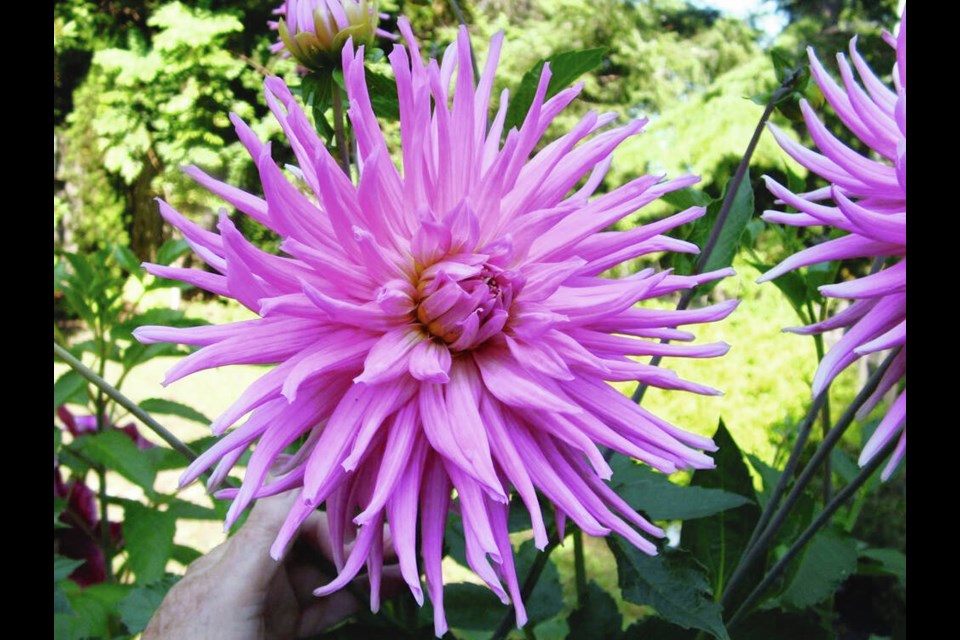Dear Helen: I grew two Cherokee Purple tomato plants, side by side, this summer. One produced nicely formed tomatoes, the other almost all misshapen fruits. Can you think of any explanation for this?
M.C.
Cherokee Purple is an heirloom tomato dating back to before 1890. The variety has been retained by commercial growers, seed companies specializing in heirlooms, and home gardeners. Different strains of the variety exist, the differences depending on how meticulous the growers have been in selecting the plant and fruit qualities they seek, and saving seeds only from the best.
Still, heirlooms and other open-pollinated plants do not have the uniformity of hybrids. Plants will display variability and sometimes “off” types will emerge.
Dear Helen: I cannot figure out what gnawed away at the surface of my zucchinis, along the far, blossom ends. The feeding left what looked like shallow scraping.
E.W.
In the photo you sent, the scarring along the blossom end of the fruit looks like woodbug (sowbug, pillbug) damage. These creatures are known for gnawing on the blossom ends of summer squash fruit, especially when the fruit is in contact with damp soil.
Sowbugs thrive and proliferate in damp places. Keeping the soil clear under and around the plants, with the surface as dry as possible, helps to reduce their populations. Avoid over-watering. When watering is required, do it in the morning to allow the soil surface to dry by evening.
Elevating squash, melon and cucumber fruits off the ground is another way to minimize damage. Prop the fruits up on overturned plant pots or some other support to help keep them dry.
Dear Helen: In my Campbell River garden, over two decades ago, I always dug up my dahlia tubers once frost had blackened the leaves. I dried the clumps upside down (to drain) on a sunny, covered patio before storing.
Now, years later in Victoria, frost comes much later — too late to cure the clumps properly for storage. When I tried digging some of them earlier, they either rotted or dried out in storage. I raise 40 plants for our church sale.
M.P.
Up until around 10 years ago, I followed the same digging, draining and storing routine that you describe. As winters became warmer, I began leaving the tubers in the ground after cutting down frost-blackened top growth and mulching over the clumps with a protective layer of wood shavings and straw.
Almost all the dahlia clumps have re-grown and bloomed when left in the ground. The only ones that did not survive were a few newly planted varieties during an unusually cold winter. The old dahlias that had been in the garden for years were fine. I do dig, divide and replant every few years though.
Since pre-frost digging has not worked, I see two choices before you: Leave the dahlias in the ground, mulched well after top growth has been removed, or wait until the leaves are frost-blacked to dig and drain as well as possible under some sort of cover before storing. The cover could be a car port, a covered porch, greenhouse, shed, or under broad eaves.
A third alternative would be to leave some of the clumps, well mulched, in the ground and do a late digging and storing of the others. That would help to guide you on the better course of action in future years.
In most years, and under congenial conditions, the in-ground storing of dahlias works well. It is not so successful in heavy, winter-wet soils and where tuber-munching soil insects abound.
Plant identification and culture. The Horticulture Centre of the 91ԭ��, 505 Quayle Rd. in Saanich, is offering the next session of Plant Identification and Culture on Saturday, 1 to 4 p.m. Diane Pierce will introduce 25 new plants with their descriptions, cultural requirements, general maintenance and landscape uses. This is an ongoing, monthly class. Members $35, others $45. For details and online registration go to hcp.ca/events. Register online or by phone: 250-479-6162.
VHS meeting. The Victoria Horticultural Society is hosting a Zoom meeting on Tuesday at 7 p.m. Brian Minter, well known author and gardening expert on radio and tv, will deliver a talk entitled Significant Changes in the past One Hundred Years of Gardening and What the Future Holds. Drop-in fee for non-members is $5. To register, visit vichortsociety.org.



